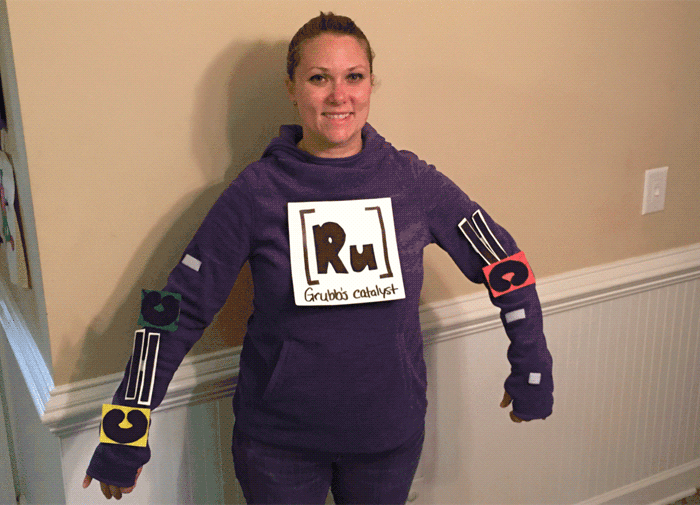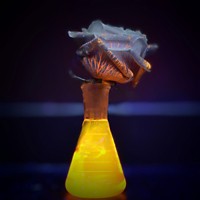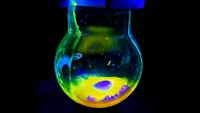Advertisement
Grab your lab coat. Let's get started
Welcome!
Welcome!
Create an account below to get 6 C&EN articles per month, receive newsletters and more - all free.
It seems this is your first time logging in online. Please enter the following information to continue.
As an ACS member you automatically get access to this site. All we need is few more details to create your reading experience.
Not you? Sign in with a different account.
Not you? Sign in with a different account.
ERROR 1
ERROR 1
ERROR 2
ERROR 2
ERROR 2
ERROR 2
ERROR 2
Password and Confirm password must match.
If you have an ACS member number, please enter it here so we can link this account to your membership. (optional)
ERROR 2
ACS values your privacy. By submitting your information, you are gaining access to C&EN and subscribing to our weekly newsletter. We use the information you provide to make your reading experience better, and we will never sell your data to third party members.
Science Communication
Newscripts
Halloween chemistry demonstrations and costumes #spookychem
by Craig Bettenhausen
October 24, 2017
| A version of this story appeared in
Volume 95, Issue 43

Torturing pumpkins
A chemistry lab and a haunted house have a lot in common: strange vapors, mysterious transformations, and eerie glows. And like a ghost, a chemist doing demonstrations seeks to draw the audience in deeper. We asked our readers for their favorite #spookychem demonstrations to tempt lost travelers across the veil.
Puking pumpkin: Chemistry teacher Michael Ng delights audiences at the annual Halloween Spooktacular held at Paul Kane High School in St. Albert, Alberta, with a riff on “elephant toothpaste.” He puts 400 mL of 35% H2O2, a squeeze of liquid dish soap, and several drops of food coloring in a 500-mL Erlenmeyer flask, which he places inside a carved pumpkin. Then he adds 100 mL of 2 M KI or NaI solution and holds down the gourd’s lid as a thick, frothy foam comes bursting from the pumpkin’s carved features.
Dark-side pumpkin: Readers Scott Milam and Tom Kuntzleman sent in a variation on the “blue bottle” reaction. In the standard demonstration, they fill a flask with the dye methylene blue along with KOH and dextrose in an aqueous solution. The dextrose reduces the methylene blue to its colorless form; shaking the flask mixes in oxygen from the air, which oxidizes the dye to its bright blue form. The dextrose then re-reduces the dye in about 30 seconds. In the Halloween version, Milam also adds orange food coloring, making the color change from orange to black instead of from clear to blue.
Ectoplasmic drool: The Idaho State University ACS student chapter often includes this jack-o’-lantern luminol demonstration in its annual Halloween magic show. First the demonstrators prepare two separate solutions, one containing 0.60 g of luminol and 3.30 g of NaOH in 2 L of water, and another containing 6.1 g of K3Fe(CN)6 and 20 mL of 30% H2O2 (added just before use) in 2 L of water. Mixing the two solutions creates a bright blue chemiluminescent glow. They then pour the mixture into a carved pumpkin over a chunk of dry ice to create a bright fog emanating from the open mouth. In this photo, a small black light enhances the glow.

Chemical costumes
In the early days of Halloween, people dressed up as things that scared them. Now, you’re as likely to see a hero as you are a spectre. We’re not sure which category these chemistry-themed costumes are in, but we’re sure they’re a hit at the departmental happy hour.
Radiation safety: Radiation safety hinges on three things: limiting exposure time, maximizing distance from the radiation source, and shielding yourself from the radiation whenever possible. Here, Alexandra Sowa (from right), Megan Stewart, and Lindsey Drake from the University of Michigan drive the point home in costume format.

Enantiomers: Alexis Courtney Young (right) and Reem Telmesani have teamed up for Halloween in each of the four years they’ve been in grad school together at Boston University. Here, they show off their enantiomers costumes.

Grubbs catalyst: Cassie Lilly of Meredith College offers her students extra credit if they show up in a chemistry-inspired costume. She led by example with her Grubbs catalyst costume featuring movable bonds that illustrate the catalytic cycle.

Cation: Sidnee-Marie Dunn, a chemistry professor at South Puget Sound Community College, shows her subatomic take on the classic cat costume.
Craig Bettenhausen wrote this week’s column. Please send comments and suggestions to newscripts@acs.org.







Join the conversation
Contact the reporter
Submit a Letter to the Editor for publication
Engage with us on Twitter